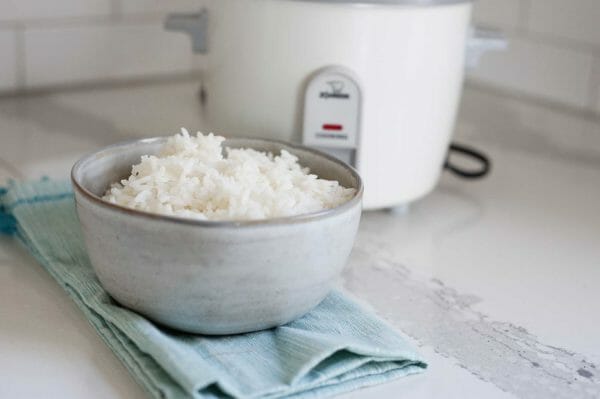Equipment GuidesTipsRice
Is a rice cooker worth it? Can they do more than cook rice? Do you need one to make perfect rice? How do they work? We’re on the answers!
Print 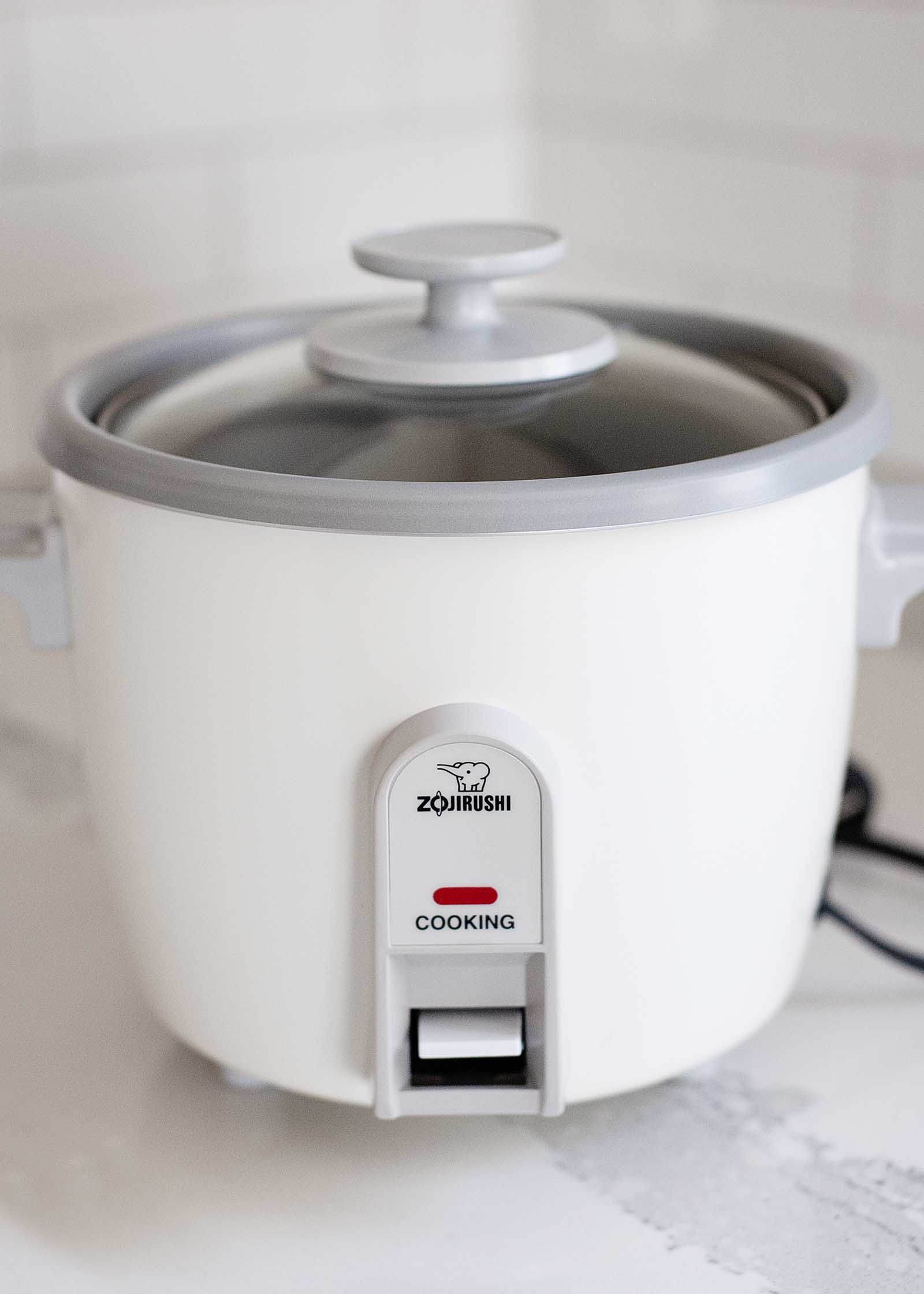
People cooked rice for ages without the aid of a specialized appliance. Who needs yet another unitasking device in their over-kitted kitchen? Maybe…you. Making rice shouldn’t be hard, but it can be for some people. No shame! Rice cookers make it easy—even for people who can legit cook rice without an assist.
Also, a rice cooker is only a unitasking device if you choose to see it that way. You can actually use it to make all sorts of things: soups, porridge, steamed vegetables, one-pot meals.
However, your desire or need to make these things in a rice cooker might not be high. Take our rice cooker compatibility quiz and see how well you are suited for each other!
SHOULD YOU BUY A RICE COOKER?
- Do you make rice or steamed grains at least a few times a week? If yes, keep reading.
- Do you have trouble making decent rice on the stovetop? If yes, keep reading.
- Do you like being able to get a machine going, walk away, and walk back to find perfectly cooked rice? If yes, keep reading.
- Do you have a tiny kitchen with no cooktop? Ding ding, looks like we have a match! Dorm rooms, offices, and hotel rooms (yes, hotel rooms) are ideal habitats for rice cookers. I know people who travel with theirs.
- Is being engaged in your rice cookery important to you? For some people, making rice is a collaborative journey. If so, you should not get a rice cooker.
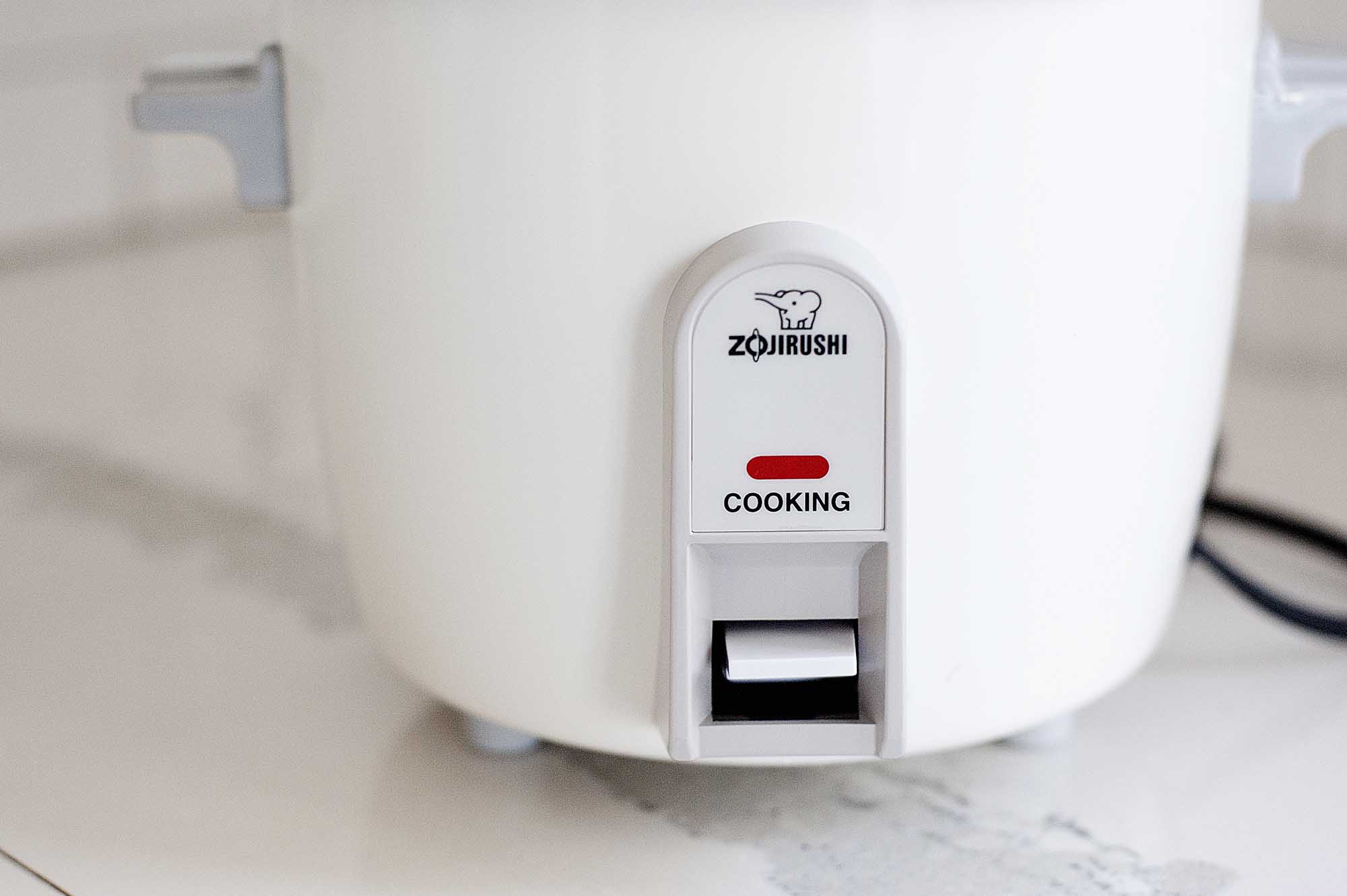
HOW RICE COOKERS WORK
The functionality of rice cookers is simultaneously simple and mysterious. You add water and rice—any kind of rice, with as much water as needed—and press ON. Then, however many minutes later, the rice is perfectly cooked…and the cooker magically knows it.
Pretty cool, huh? At that point, the cooker switches itself to WARM, and your cooked rice sits there at a perfect steamy serving temperature, waiting patiently for you to come dip into it at your leisure.
While the happy juju of rice cookers certainly has its appeal, it all happens through ingenious technology. The rice cookers we use today have been around for decades and were first developed in Japan. They can detect the grain’s absorption of liquid because of a thermostat: The liquid in the pot can’t reach more than 212°F (100°C) if it’s mostly water. Once the liquid is gone, the cooker’s heating element spikes, triggering the thermostat to switch the unit to WARM, knowing there’s no more need to boil anything.
If that makes no sense, don’t fret. How this works does not matter. What does matter is how you work it, and that part is easy.

RICE COOKERS, FROM BASIC TO COMPLICATED
You can spend as little as $15 on a rice cooker, and as much as $140. Every rice cooker can make perfect rice and more, so what’s the need for juiced-up ones?
Here’s a quick summary of kinds you’ll see out there.
Cook/Warm cookers: These are the cheapie cookers that have two settings: ON (or BOIL or COOK) and WARM. They are quietly dependable and can last for years despite their modest price tag. Common brands here are Aroma and Zojirushi, shown in these photos.
Zojirushi 10-Cup Rice Cooker
$71.95 at Walmart Buy
Fuzzy logic/smart rice cookers: If on/off rice cookers are flip phones, these are iPhone 11s. Why fuzzy logic? It’s the artificial intelligence the unit is equipped with. It helps it detect the volume of liquid and rice and make adjustments accordingly. These also have dedicated settings for porridge, sweet or sticky rice, brown rice, and beans. They cost quite a bit more than on/off cookers and have many more bells and whistles. Common brands are Zojirushi and Cuckoo.
Cuckoo 10-Cup Electric Heating Pressure Rice Cooker
$219.99 at Walmart Buy
Pressure multi-cookers: Multi-function cookers, like the Instant Pot, are like slow cookers, pressure cookers, and rice cookers, all on one pot. If just reading that makes you feel confused and freak out, relax! Just don’t get that kind. If you’d like to have one appliance that does the work four of five, explore those a little more.
Cooking rice under pressure is its own thing, and while not covered in this guide, you can read all about it here, and read about the Instant Pot in particular right here.
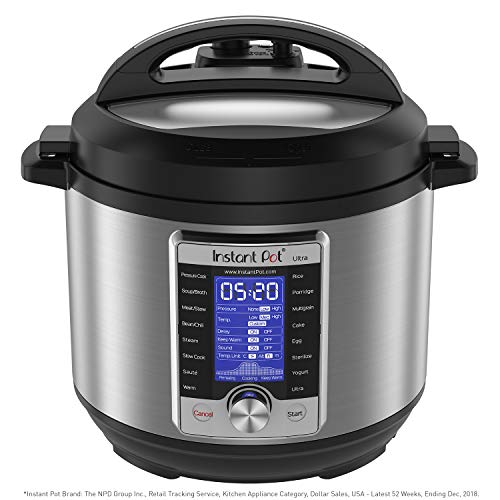
Instant Pot 6-Quart Multicooker
$149.95 on Amazon Buy
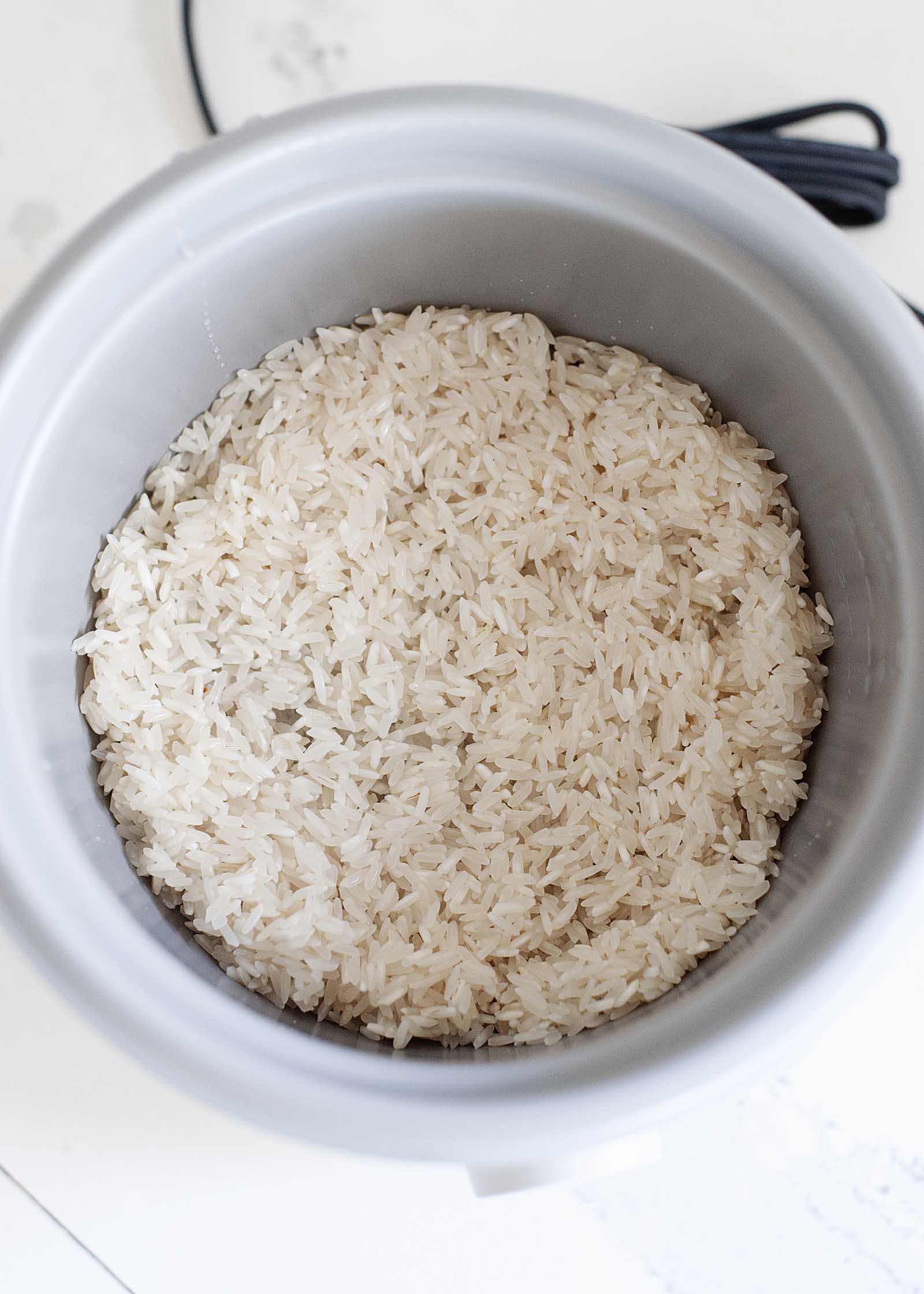
CAPACITY COUNTS
When selecting a rice cooker—any kind of rice cooker—capacity is a biggie. Cookers tend to come in three-cup, six-cup, and 10-cup capacities. The capacity of a cooker indicates how much cooked rice it holds. So don’t put three cups of dry rice in a three-cup cooker; it’ll make up to three cups of cooked rice.
Small rice cookers don’t do well with large amounts of rice, because they can overflow. Not all large cookers do well with small amounts of rice, either. If you eat rice throughout the day, are cooking for a larger household, or like leftovers, go for a medium to large cooker. Smaller households would do better with a three-cup cooker.
HOW TO USE A RICE COOKER TO MAKE RICE: THE BASICS
- Measure the rice. Brown rice, white rice, black rice, basmati rice—whatever rice floats your boat. The cooker will just know what to do, trust me.
- Rinse the rice. This step is optional, but it does give you fluffier rice with more distinct grains if that’s what you’re looking for.
- Put the rice in the cooker.
- Measure the water and add it to the cooker. How much water? It depends on the kind of rice you are making, but you’d use the same amount of water or liquid as you’d use for stovetop cooking. (If you are using a multi-cooker under pressure, this won’t be the case; refer to the manual.)
- Put on the lid.
- Switch the cooker to BOIL or COOK. If it’s a fuzzy logic cooker or a multi-cooker, just select the program for the kind of rice you are making. You’ll need to read the directions the cooker came with. Sorry.
- Let it cook. How long will this take? It depends on the cooker, and how much liquid you added. However, it always seems to take longer than I expect. Stovetop burners usually boil water faster.
- Listen and look. When the rice is cooked, the cooker’s special hidden juju will switch to WARM, and the light will change. Some cookers will beep, or even play a little song. Inexpensive cookers will sometimes produce an audible CLICK, but that’s it.
- Lift off the lid and check the rice. It’ll be done, I promise. Oh ho ho, it’s magic! Invariably, rice is best after it sits steaming gently about 10 minutes after the cooker switches to warm (this is true of rice cooked on a stovetop, too).
- Eat the rice when you’re ready. When the cooker is on, the rice waits for you patiently at just the right temperature. Goldilocks would be into it. This is the big win with rice cookers. Yep, it’s safe to have the rice sitting there for hours and hours on the warm setting! What do you think they do at restaurants, after all?

HOT TIPS!
- If you’re cooking dinner, get the rice going first. Set it and forget it. As the rice cooks, prep whatever else you are making—a curry, a stir-fry, sautéed veggies, grilled steak—and by the time that’s ready, so is your rice.
- A lot of rice cookers come with a plastic measuring cup. Be mindful that they don’t all measure out one actual imperial cup of rice. They’re best used for direct ratios (for example, one plastic cup rice to two cups water).
- Look out for a misty shower of goop from the lid if your cooker has a steam vent hole in its lid. Some types of rice and grains (oatmeal, I’m lookin’ at you!) tend to produce a gradual, subtle spray of gunk from the vent hole and it gets all over everything nearby.
- Think of your rice cooker as a combination between an electric skillet and slow cooker. If you like, you can sauté onions in your rice cooker, add liquid, let it come to a boil, and make simple soup. Or you can add water and then a steaming rack and steam foods.
OTHER FOODS YOU CAN COOK WITH RICE COOKERS
It’s true. You can cook entire meals in a rice cooker if you want. Here are my favorite other foods to cook in a rice cooker.
Other Grains
Quinoa, farro, barley, millet, buckwheat, bulgur…you get the idea. Even though these are not rice, it’s not a problem. The happy juju of the rice cooker gets it.
Steel Cut Oatmeal
My favorite non-rice thing to make in a rice cooker is steel-cut oatmeal. I combine the oats and water (using one cup oats to three cups water) in the cooker the night before and let them soak overnight, which cuts down on cooking and makes the nutrients easier for your body to absorb. Then, shortly after waking up, I turn on the cooker, and my oats are cooked in about half an hour.
That may seem like a long time, but you don’t have to attend to them. Brew coffee, read the paper, make yourself pretty, and by then the oatmeal is ready to eat.
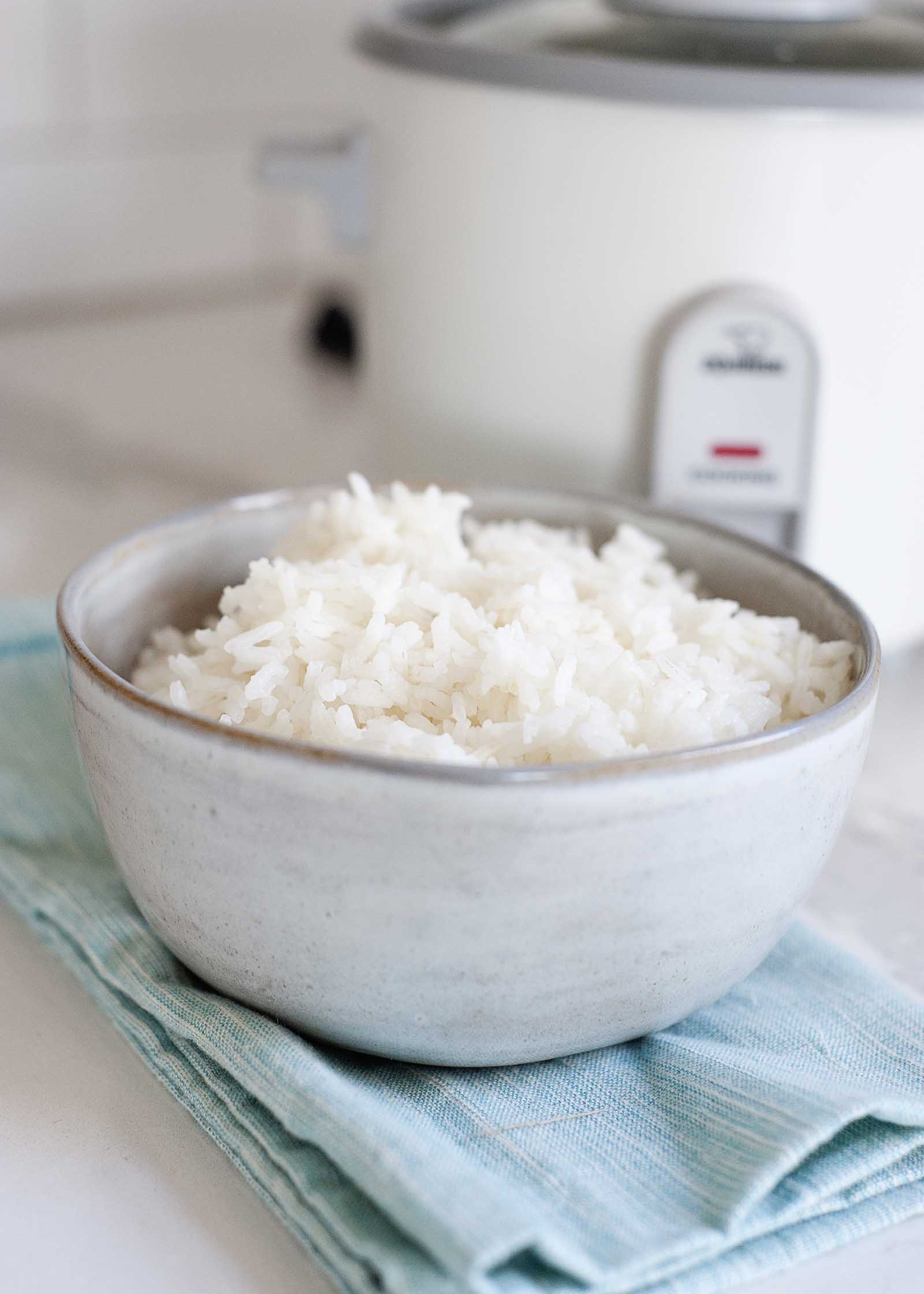
RESOURCES FOR COOKING WITH A RICE COOKER
Kicked-up rice cookers come with directions and recipe booklets that outline non-rice cookery in greater depth. You can use inexpensive rice cookers for that sort of cooking, too, but you’ll have to venture out into the wilds a bit. Two books that might help, no matter what sort of cooker you have:
- The Everyday Rice Cooker by Diane Phillips (This is a legit cookbook.)
- The Pot and How to Use It by Roger Ebert (Yes, the movie critic, and while the book has recipes, it’s more of an uplifting rice cooker manifesto than a cookbook.)
So! Have you decided if you want a rice cooker or not? Are you jazzed about taking the new one you have out of the box for a spin? Ready to rekindle a long-forgotten appliance romance? With or without a cooker, this is just the beginning of your journey. Enjoy it.
MORE WAYS TO COOK RICE:
- How to Make White Rice on the Stovetop
- How to Cook Brown Rice
- How to Make Rice in the Instant Pot
- How to Freeze and Reheat Rice
Follow me on Pinterest
Products We Love
Cuckoo 10-Cup Electric Heating Pressure Rice Cooker
$219.99 at Walmart Buy
Zojirushi 10-Cup Rice Cooker
$71.95 at Walmart Buy
This post may contain links to Amazon or other partners; your purchases via these links can benefit Simply Recipes. Read more about our affiliate linking policy.
 Sara Bir
Sara Bir
Sara Bir a graduate of The Culinary Institute of America and the author of two cookbooks: The Fruit Forager’s Companion and Tasting Ohio. Past gigs include leading chocolate factory tours, slinging street cart sausages, and writing pop music criticism. Sara skates with her local roller derby team as Carrion the Librarian.
More from Sara


